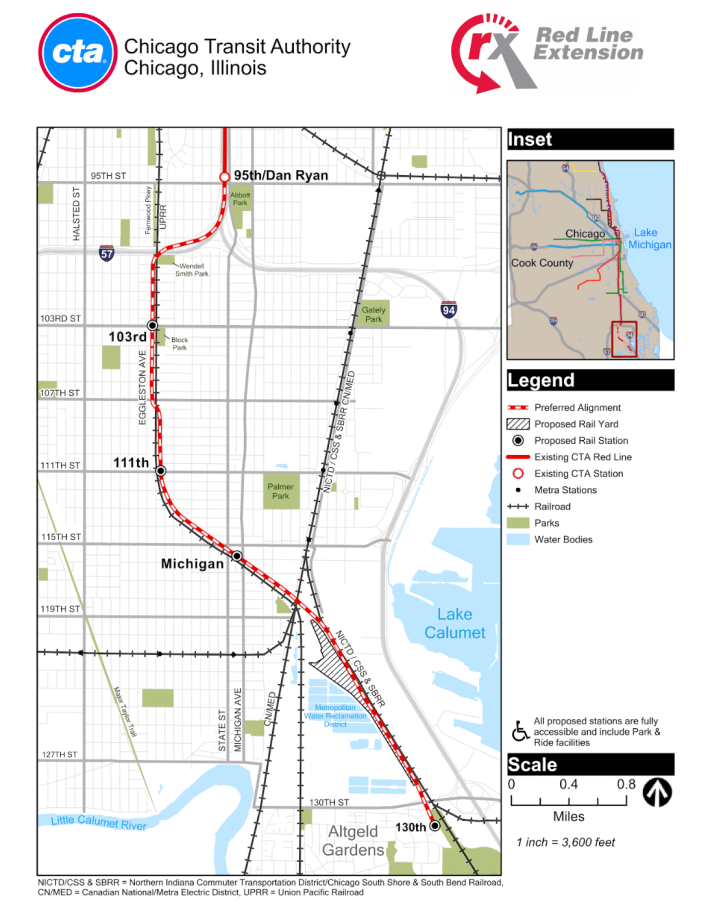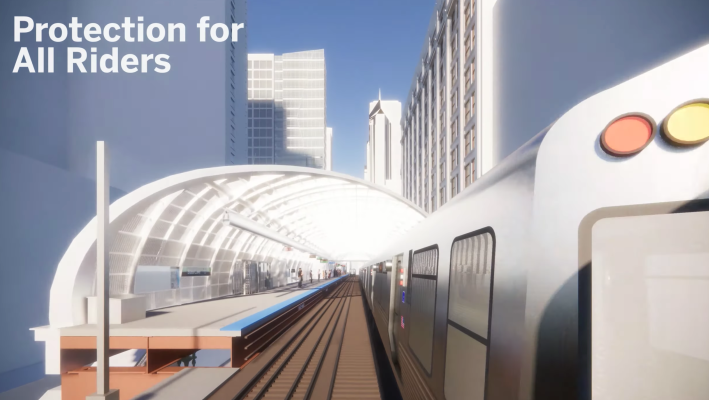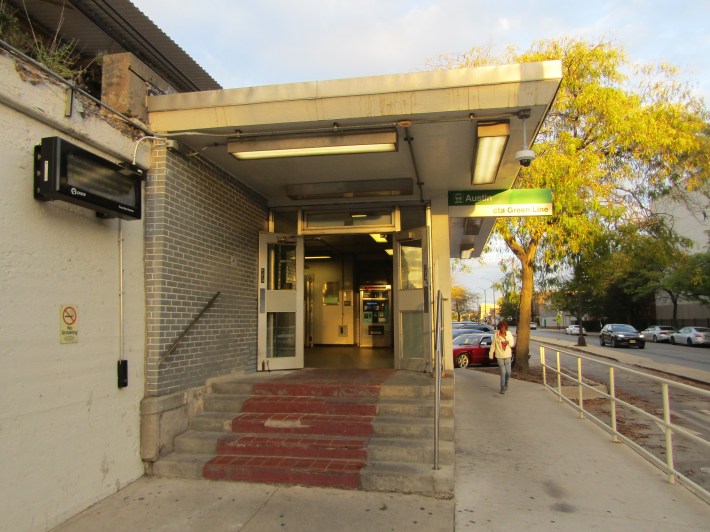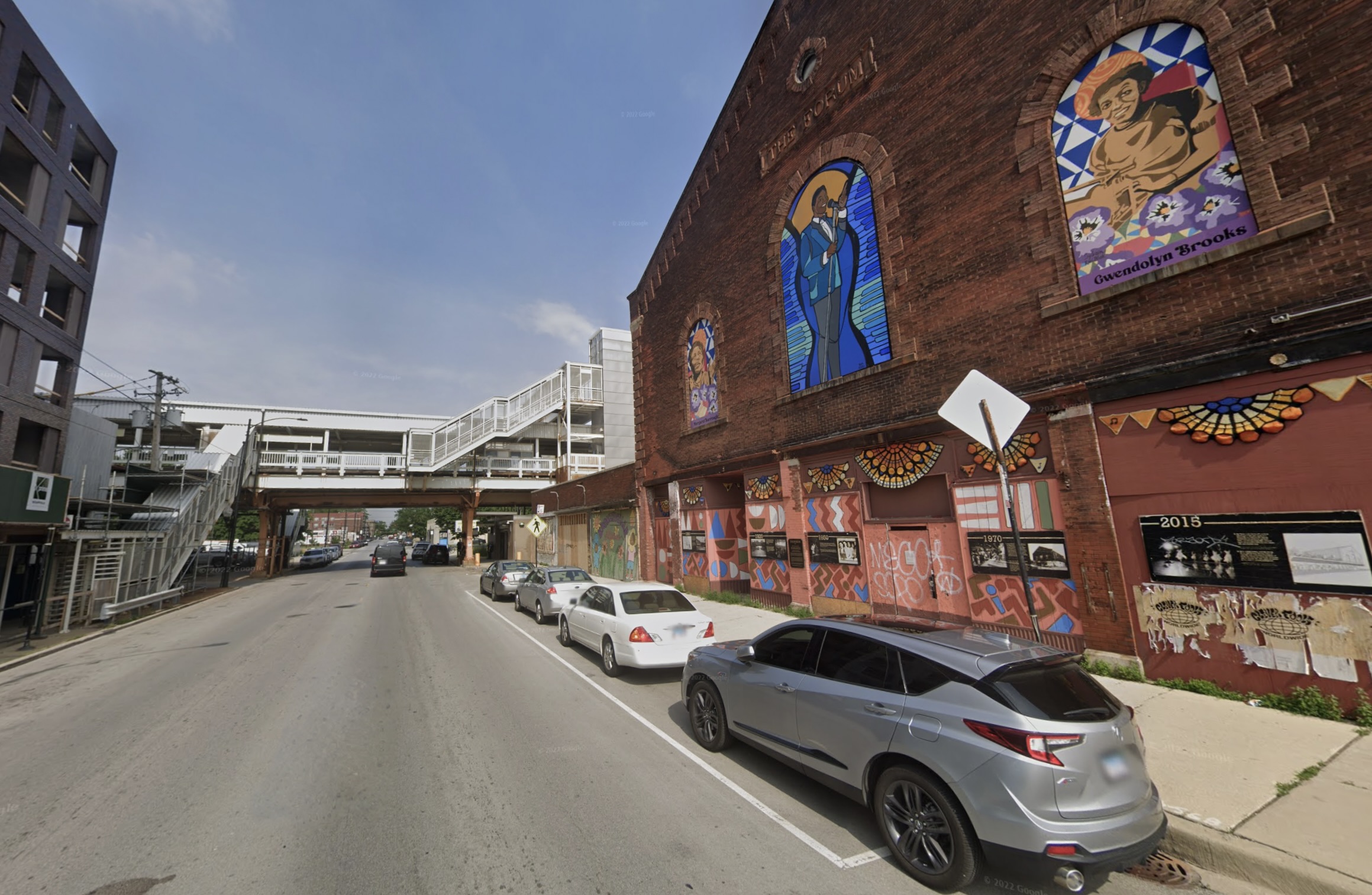
The CTA released its proposed 2025 CTA budget last Friday, October 11. The document hints at some potential service increases, touts several station improvements that have been discussed for years, and even dares to hope that 2025 will be the year construction finally starts on the long-awaited Red Line extension.
The transit agency is proposing an 8.1 percent increase in operational spending, or around $161.1 million. That money would at least partially go toward "hiring, training and retaining key operations personnel to provide service levels that exceed 2019/pre-pandemic levels." But, as the CTA itself acknowledges, that comes with a caveat. 2025 will be the last year the CTA (and Metra, and Pace) will be able to use federal COVID-19 stimulus funds to fill budget gaps. In 2026, the region is expected to face a $730 million total budget cliff.

The CTA usually releases budgets during its board's regularly scheduled October meetings. But this time around, it released the budget two days after the Wednesday, October 9 meeting. CTA spokesperson Catherine Hosinski later told Streetsblog that delay was due to the budget not being quite ready to present at the board meeting.
The transit agency will hold a public hearing on Thursday, November 7, at 6:30 p.m. at the CTA headquarters, 567 W. Lake Street, in the second floor conference room. The board is expected to approve the budget on Wednesday, November 13. The Regional Transportation Authority, which oversees the three transit system, will give a final approval but, as with Metra and Pace budgets, that step is usually a rubber stamp.
Service Improvements
The CTA budget doesn’t get into specifics about upgrades to service. It says only that, "In 2025, CTA will continue seeking opportunities to extend existing bus routes to reach new riders, address gaps in CTA service, improve connectivity to Metra and Pace service and other CTA bus and rail service, and provide better relief options for operators." It mentions the popular extension of bus Route 9/Ashland to the Metra Union Pacific North line's Ravenswood station as an example of the kind of changes that might be in the pipeline.
The CTA is also planning to work with the Chicago Department of Transportation to give buses signal priority at five major corridors – Pulaski Road (4000 W.), Western Avenue (2400 W.), Cottage Grove Avenue (800 E.), Fullerton Avenue (2400 N.), and 55th Street/Garfield Boulevard. "Outreach to communities and stakeholders along these corridors is anticipated in 2025," the budget states.
It also mentions that "CTA will be working with Cook County to evaluate the potential benefits of adding new rail stations at several locations on the existing rail network throughout the region," but doesn’t elaborate any further.
The budget mentions that the new CTA/Metra/Pace 1-Day pass, which was originally supposed to launch this fall, will debut next year instead.
Capital projects
The Red Line Extension to 130th Street has been discussed longer than many Streetsblog readers and contributors have been alive. (The fact that in 2023, the project was slated to get a $1.973 billion grant, provides a clue to which year it was first promised. - Ed.)

So one can be forgiven for skepticism about the budget statement, "CTA expects major construction of this project to begin in late 2025." That's especially true because that sentence is immediately followed by "The project start date is dependent on securing full project funding" But the CTA was confident enough to include that goal in the press release for the proposed budget, stating, "This transformational project will provide greatly improved transit access and connectivity to the Far South Side."
The CTA expects to spend around $3.96 billion on the Red Line Extension over the next four years.
The agency will also begin renovations on several stations. Most notably, there's the long-discussed renovation of the State/Lake Loop Elevated station (not to be confused with the Red Line's Lake subway stop a little further south.) The new State/Lake station will have wider platforms and a semi-transparent roof sheltering both platforms.

The renovated State/Lake station will also feature an overhead bridge with elevators and escalators down to street level. These new lifts, along with new elevators that will be built at Lake Red stop's north entrance, will improve ADA access.
Currently, there's only option for riders who want to transfer directly between a Red Line subway station and an elevated line stop without climbing stairs. That's to use the Roosevelt station, which serves the Red Line, and the elevated Orange, and Green Lines. So the renovated State/Lake station will provide a second no-stairs subway/elevated transfer option.
Another station improvement project is the Austin/Lake Green Line station, which sits at the Chicago/Oak Park border, where riders can transfer to multiple CTA and Pace bus lines. The station has an escalator, but no elevator, and stairs are the only way to access the station house.

The Austin/Lake project will rebuild the entire station house, complete with a ramp to allow wheelchair access to the station, and a wider bus boarding platform. The upgrade will involve installing an elevator, but ironically doing so will involve removing the escalator. The station is basically stuck within the embankment footprint, and eliminating the escalator was determined to be the only way to provide enough clearance for wheelchair users to reach the elevator.
(The Granville Red Line station was rebuilt in 1980 with both an escalator and an elevator, making it the first 'L' station to receive a lift to improve accessibility. But Greenville illustrates why the CTA doesn’t want to go that route again in a station with a small footprint. The escalator/elevator combo means that customers must use a narrow passageway to get to and from the elevator, which is precarious for anyone using a wheelchair or a walker.)
The CTA will also refurbish the Green Line's 43rd Street station. According to the budget document, that project will include "stair, platform, and canopy upgrades," as well as new lighting, new ceilings, and new artwork to complement The Forum events center, located just east of the 'L' stop.

Did you appreciate this post? Please consider making a tax-deductible donation, to help keep Streetsblog Chicago's sustainable transportation news and advocacy articles paywall-free.





